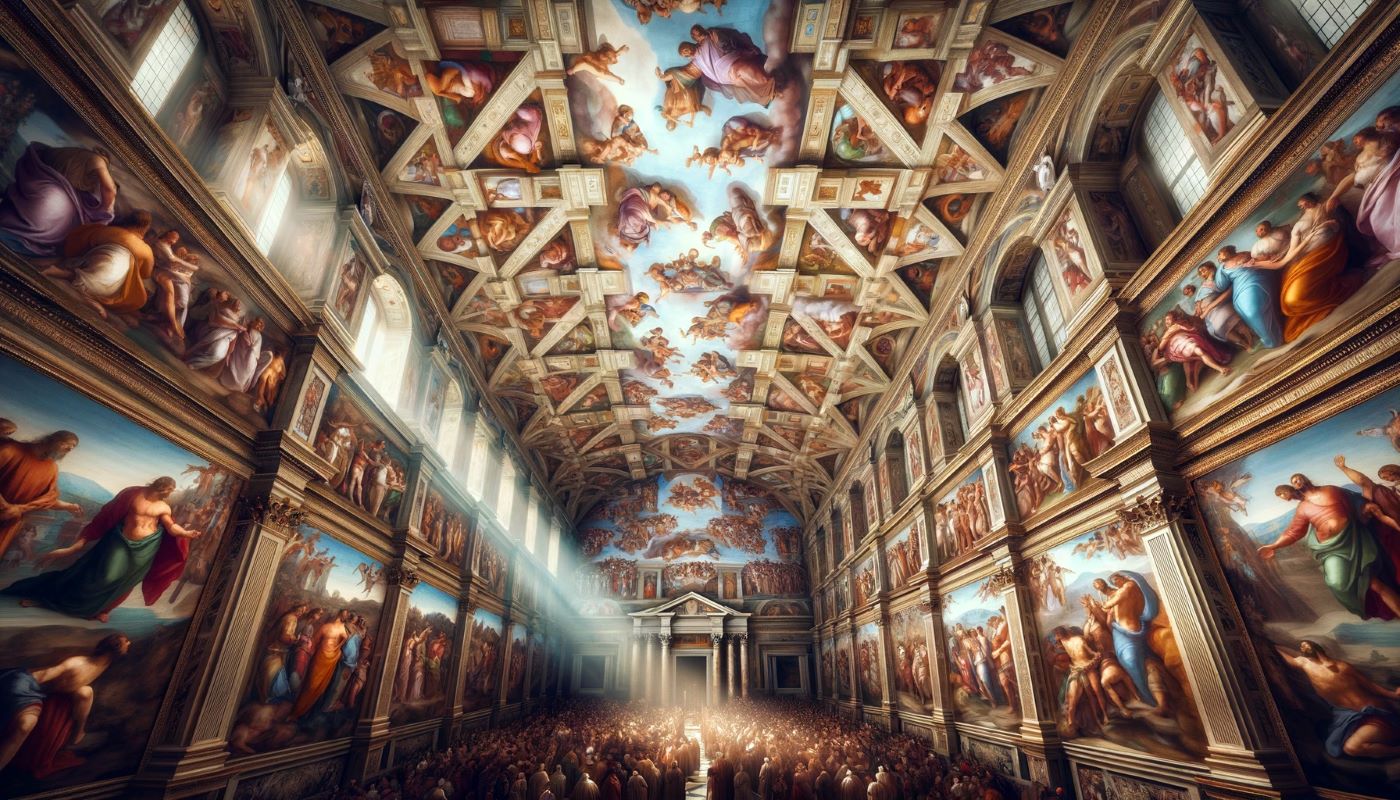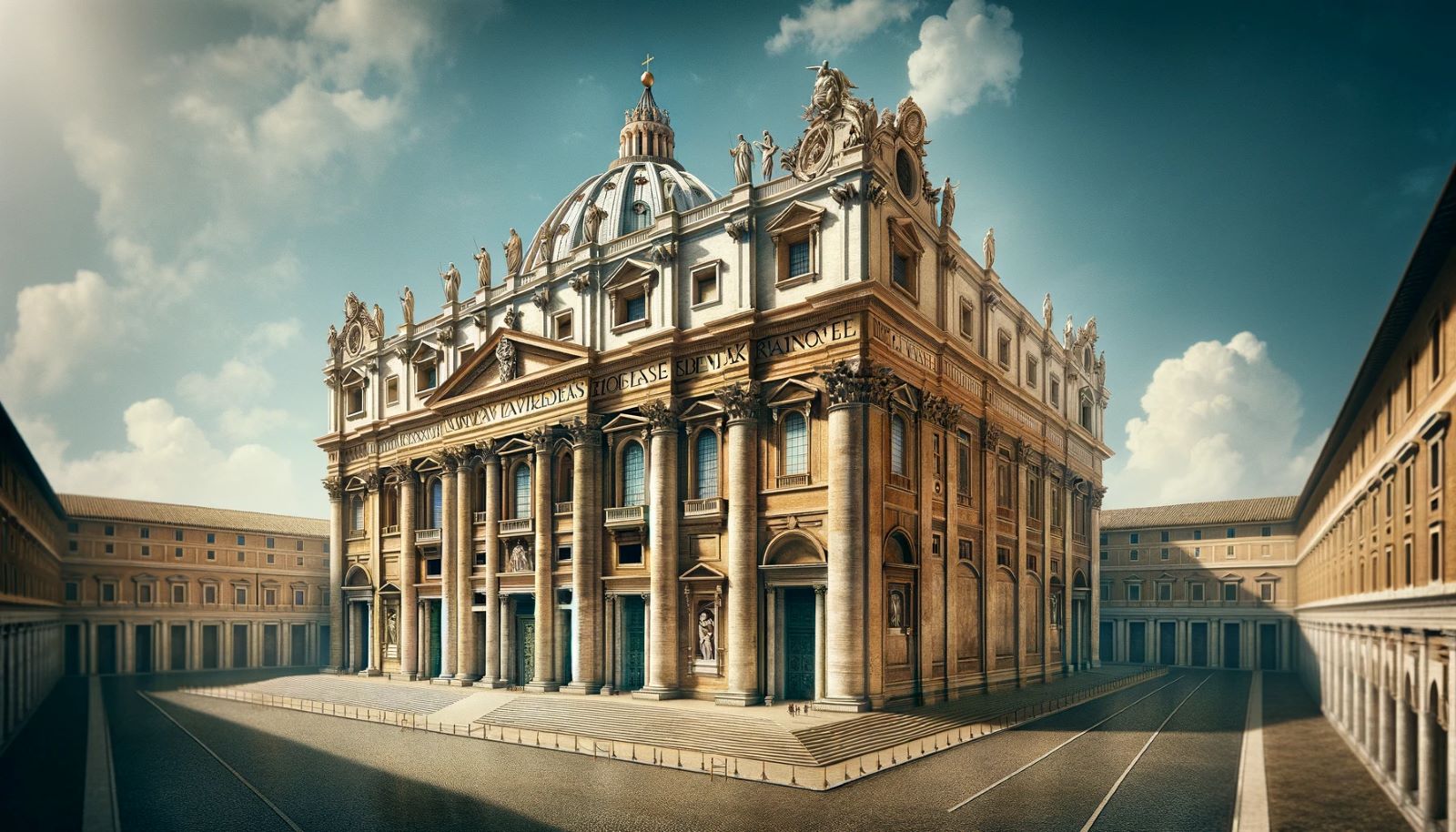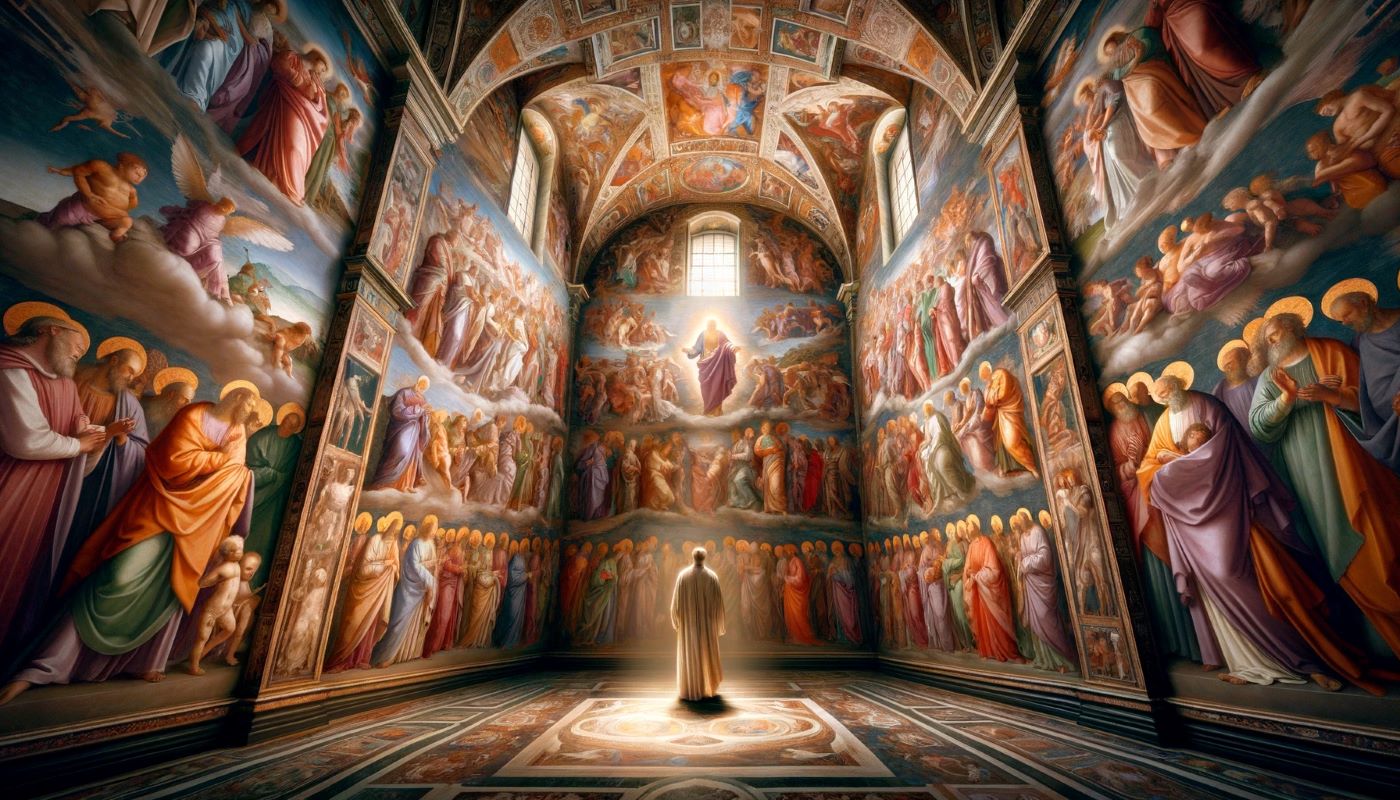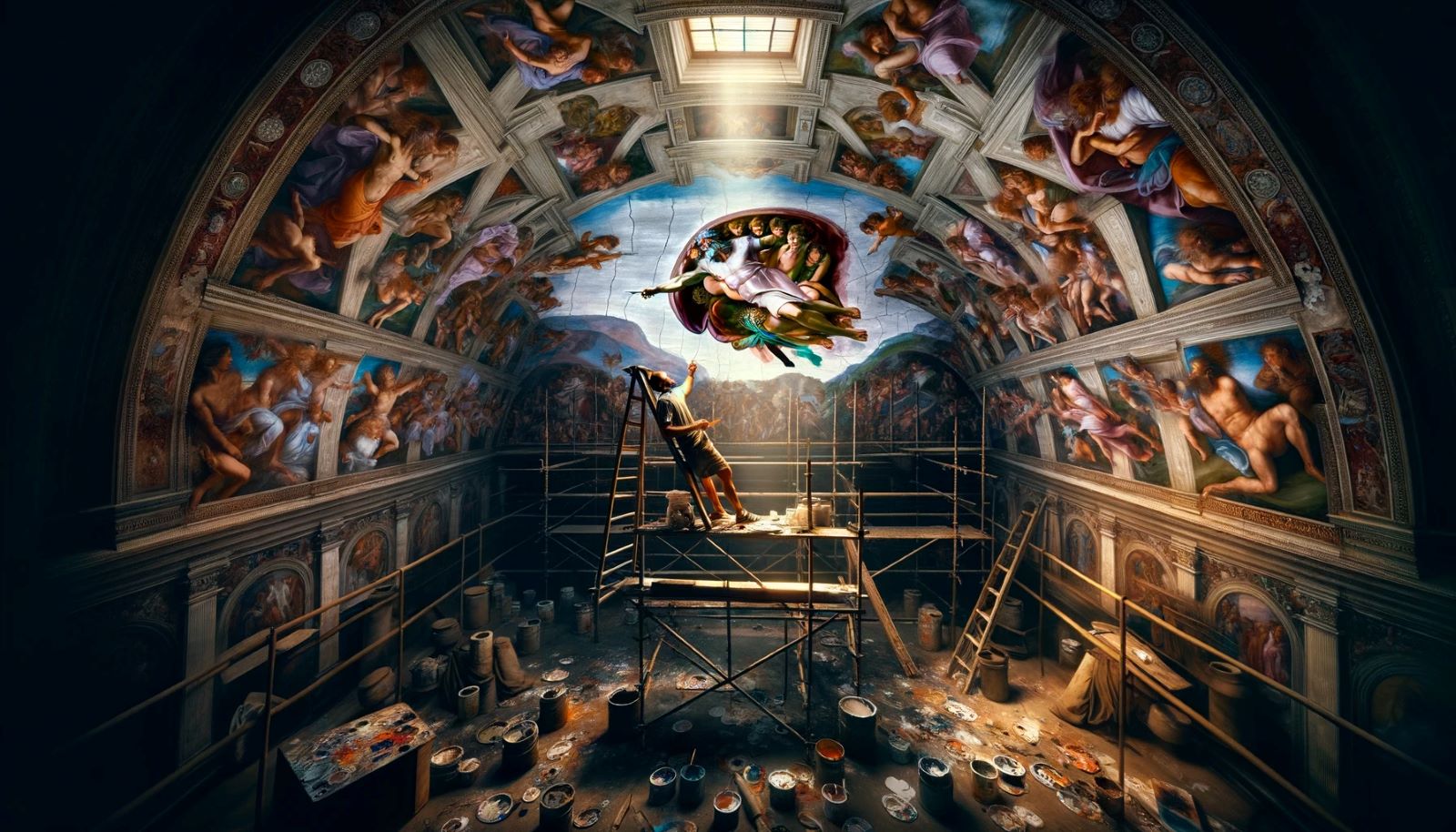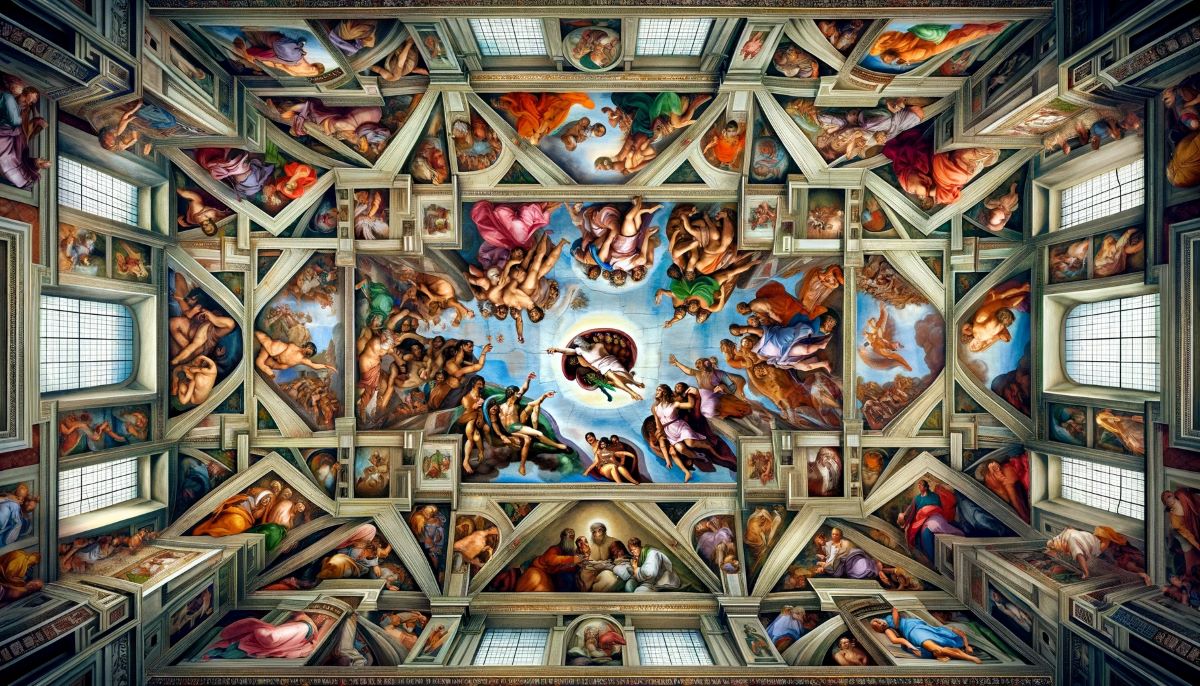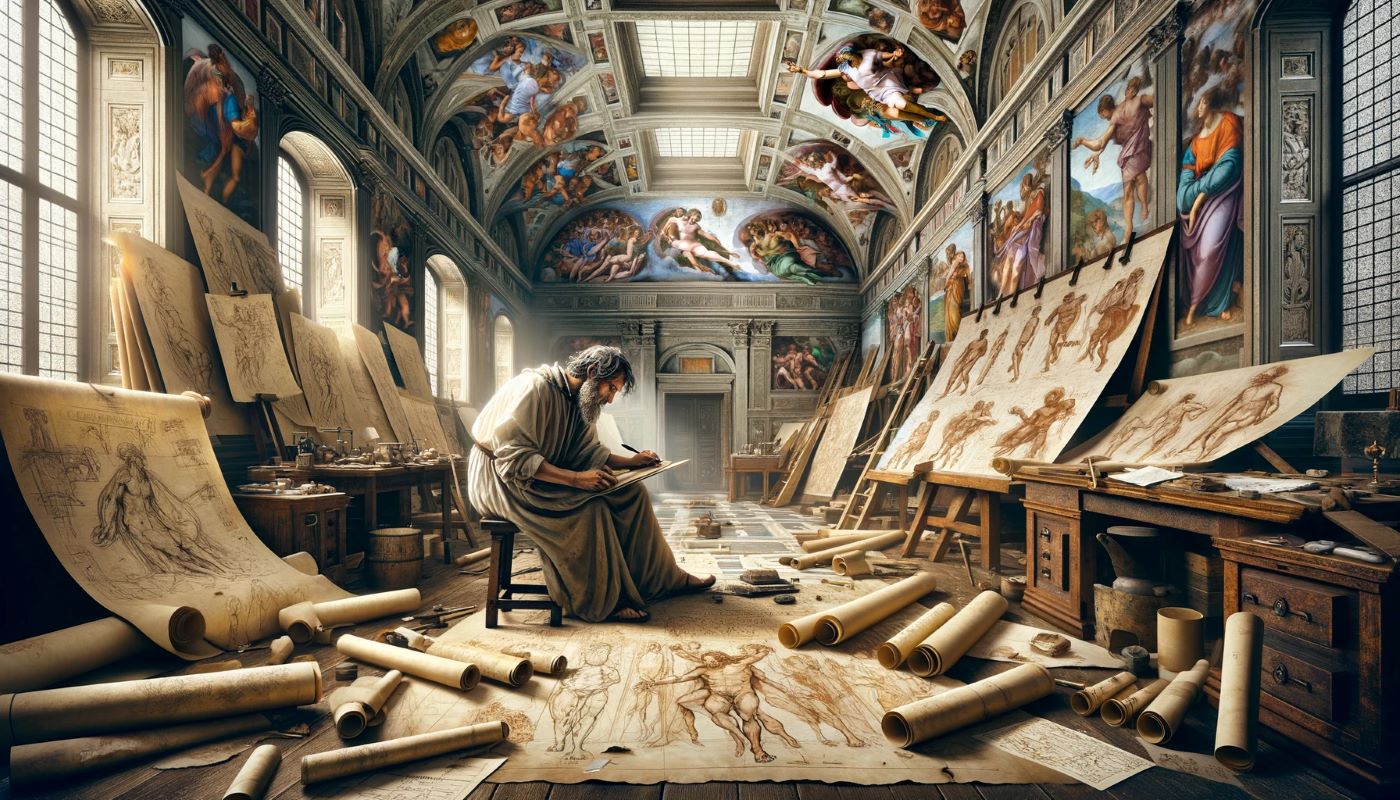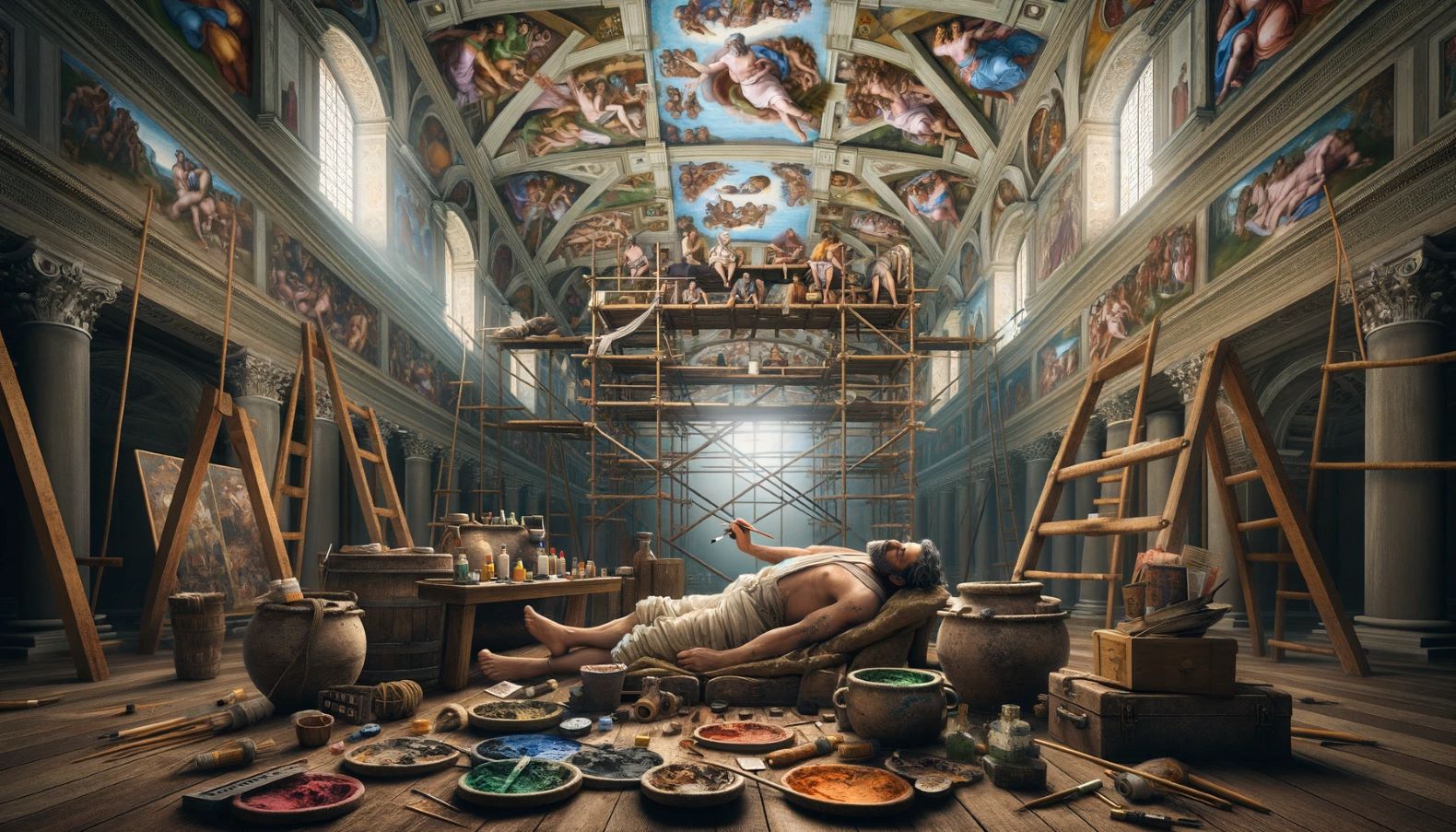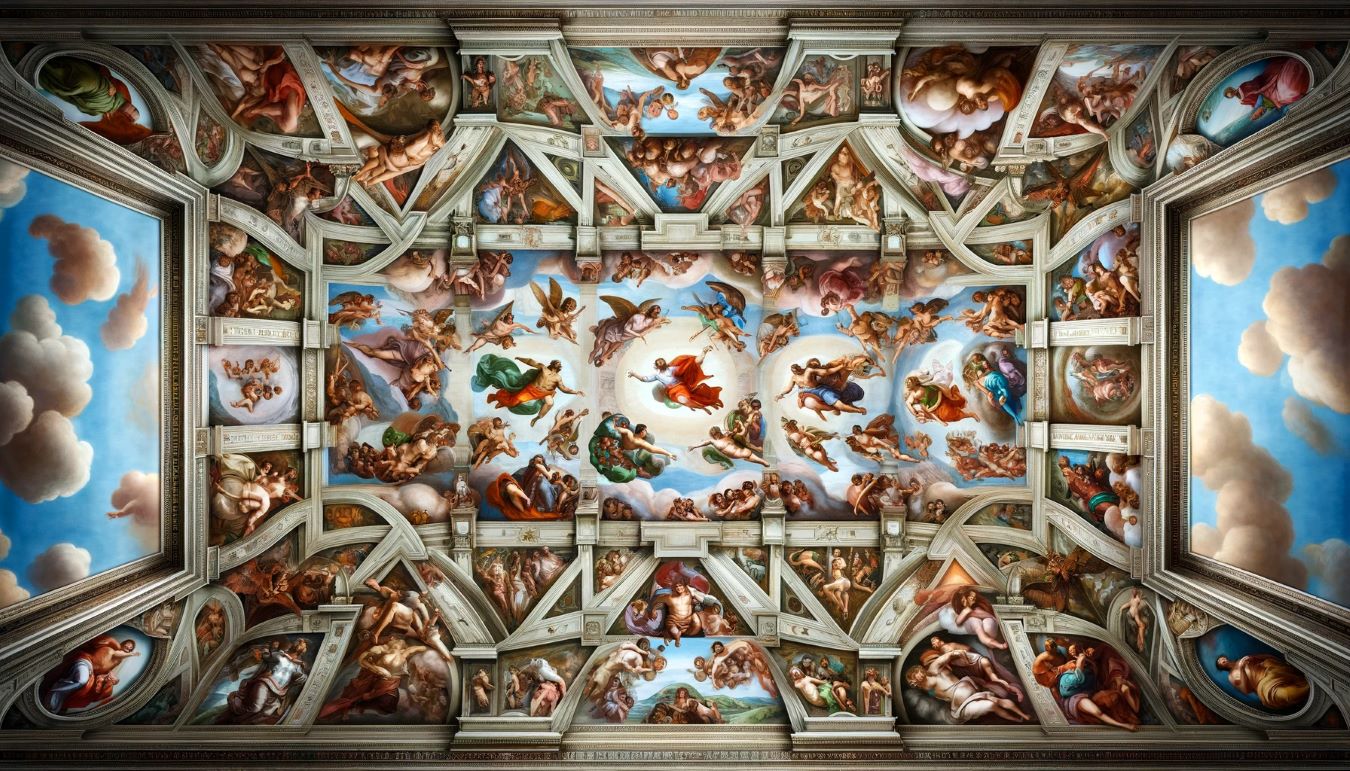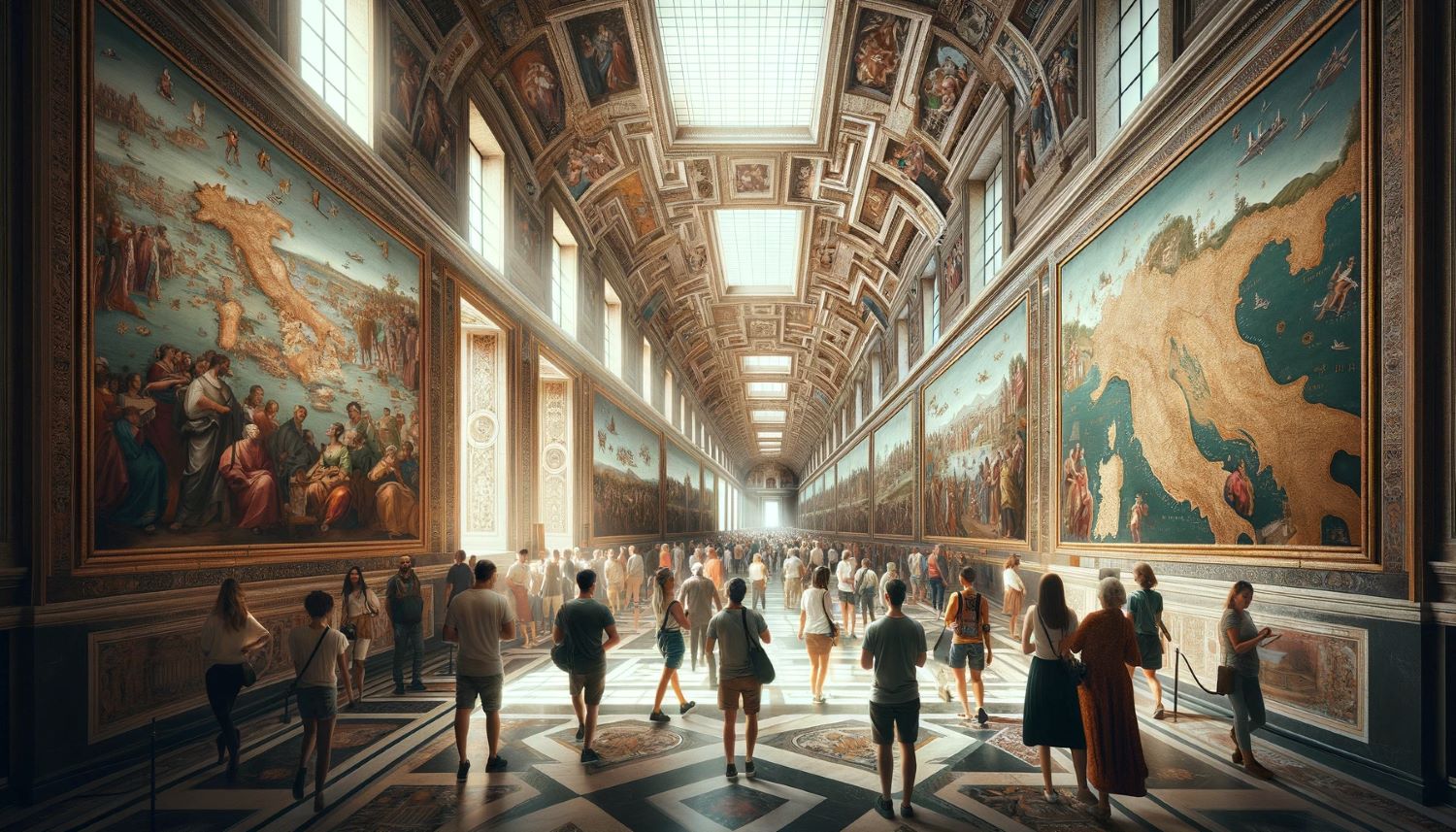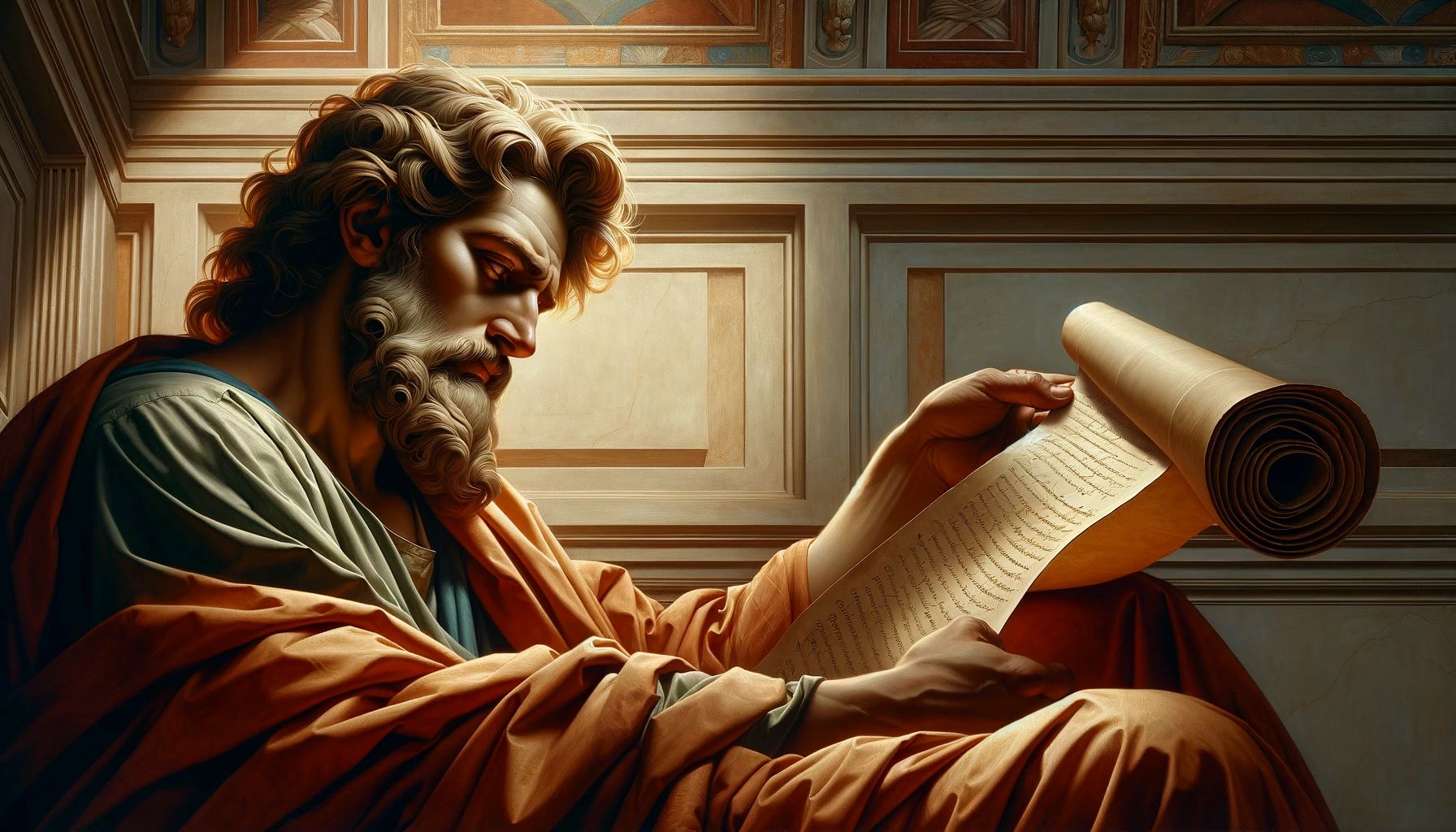Home>Arts and Culture>How Did The Sistine Chapel Frescoes Represent A New Era Of European History
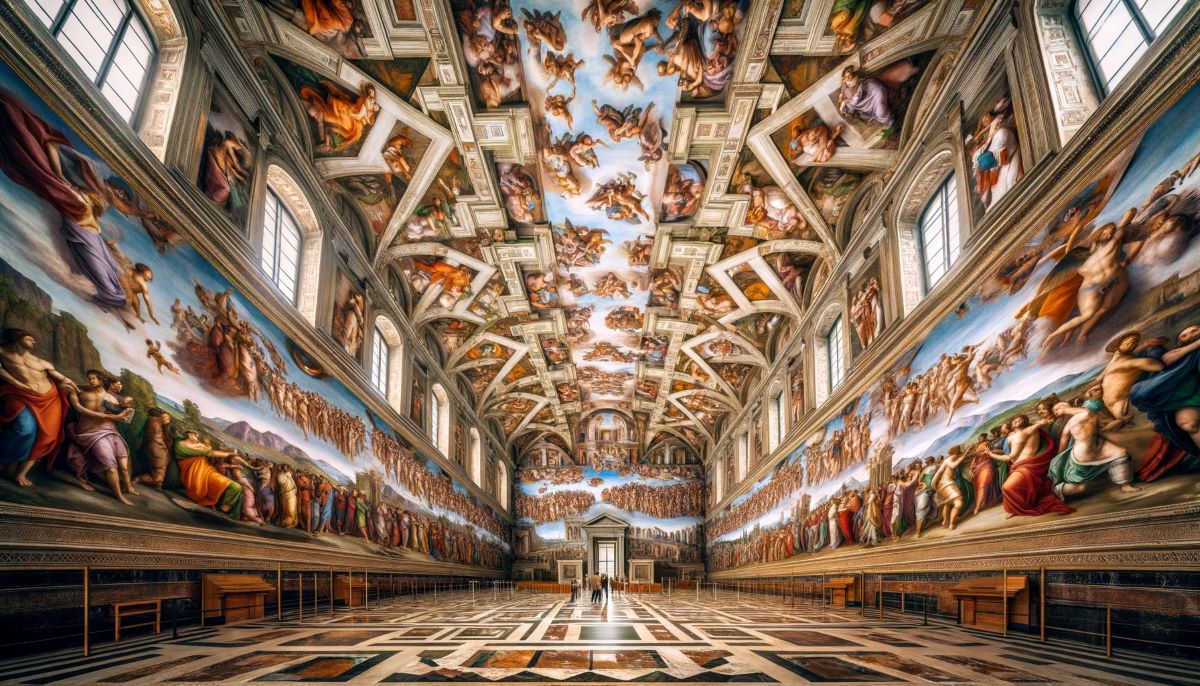

Arts and Culture
How Did The Sistine Chapel Frescoes Represent A New Era Of European History
Published: March 4, 2024
Jason DeRose, Managing Editor at Christian.net, uses his expertise in religion and journalism to deepen understanding of faith's societal impacts. His editorial leadership, coupled with a strong academic background, enriches the platform’s diverse content, earning him recognition in both journalism and religious circles.
Discover how the Sistine Chapel frescoes marked a pivotal shift in European history, exploring the intersection of art and culture in a new era. Uncover the profound impact of these masterpieces on the artistic landscape.
(Many of the links in this article redirect to a specific reviewed product. Your purchase of these products through affiliate links helps to generate commission for Christian.net, at no extra cost. Learn more)
Table of Contents
- The Renaissance and Its Impact on European Art
- Michelangelo and the Sistine Chapel Frescoes
- The Iconography of the Sistine Chapel Frescoes
- The Sistine Chapel Frescoes as a Reflection of Humanism
- The Sistine Chapel Frescoes and the Shift in Religious Art
- The Legacy of the Sistine Chapel Frescoes in European History
The Renaissance and Its Impact on European Art
The Renaissance, a period of great cultural, artistic, and intellectual rebirth in Europe, had a profound impact on the art of the time. This period, which spanned roughly from the 14th to the 17th century, marked a significant shift in the way art was created and perceived. It was characterized by a renewed interest in classical learning, a focus on humanism, and a departure from the rigid artistic conventions of the Middle Ages. The Renaissance brought about a new era of creativity and innovation, leading to the development of new techniques and styles that would forever change the course of European art.
-
The revival of classical learning and the emphasis on humanism during the Renaissance led to a renewed interest in the human form and the natural world. Artists began to study anatomy and perspective in greater detail, resulting in more realistic and lifelike representations in their works. This newfound focus on humanism and the natural world had a profound impact on European art, as it shifted the emphasis from the divine and otherworldly to the human experience and the beauty of the physical world.
-
The Renaissance also saw the rise of individualism, with artists gaining recognition and status as independent creators. This shift allowed artists to explore their own unique styles and express their individual perspectives, leading to a diverse range of artistic expressions. The newfound freedom and autonomy afforded to artists during the Renaissance contributed to the development of art as a form of personal and creative expression, rather than solely a means of religious or political representation.
-
The period also witnessed advancements in artistic techniques and materials, such as the use of oil paint and linear perspective, which allowed for greater depth and realism in artworks. These technical innovations revolutionized the way art was created and experienced, paving the way for new artistic possibilities and pushing the boundaries of artistic expression.
The Renaissance's impact on European art was far-reaching, setting the stage for the emergence of new artistic movements and styles that would continue to evolve in the centuries to come. The period's emphasis on humanism, individualism, and technical innovation laid the foundation for a new era of artistic exploration and creativity, leaving an indelible mark on the history of European art.
Read more: How Was The Sistine Chapel Restored
Michelangelo and the Sistine Chapel Frescoes
-
Michelangelo Buonarroti, one of the most renowned artists of the Italian Renaissance, was commissioned by Pope Julius II to decorate the ceiling of the Sistine Chapel in Rome. This monumental task would become one of Michelangelo's most celebrated and enduring achievements, showcasing his exceptional talent and mastery of the human form.
-
The Sistine Chapel, a sacred space within the Vatican, provided the backdrop for Michelangelo's awe-inspiring frescoes. The project, which spanned four years from 1508 to 1512, involved Michelangelo painting a series of intricate scenes from the Book of Genesis, as well as various prophets and sibyls, on the chapel's ceiling. The sheer scale and complexity of the undertaking demonstrated Michelangelo's unparalleled skill as a painter and his ability to work on a grandiose and ambitious scale.
-
Michelangelo's approach to the Sistine Chapel ceiling was groundbreaking in its execution. He employed a technique known as fresco, where pigments are applied directly onto wet plaster, allowing the colors to become an integral part of the wall or ceiling. This method required meticulous planning and precision, as any mistakes made during the painting process would be permanent once the plaster dried. Despite the challenges posed by this technique, Michelangelo's mastery of fresco painting resulted in vibrant and enduring artworks that continue to captivate viewers to this day.
-
The Sistine Chapel frescoes are a testament to Michelangelo's unparalleled artistic vision and technical prowess. The scenes depicted on the ceiling, including the iconic "Creation of Adam" and "The Last Judgment," showcase Michelangelo's ability to convey profound emotion and drama through his use of form, composition, and color. The intricate details and lifelike figures within the frescoes demonstrate Michelangelo's deep understanding of human anatomy and his ability to imbue his subjects with a sense of vitality and movement.
-
Michelangelo's work on the Sistine Chapel ceiling not only solidified his reputation as a master artist but also left an indelible mark on the history of European art. The frescoes remain a testament to the enduring legacy of the Italian Renaissance and continue to inspire and awe countless visitors who flock to the Sistine Chapel to witness Michelangelo's unparalleled artistic genius firsthand.
The Iconography of the Sistine Chapel Frescoes
The iconography of the Sistine Chapel frescoes is a rich tapestry of symbolic imagery and biblical narratives that reflect the theological and spiritual themes of the Christian faith. Michelangelo's masterful use of iconography in the frescoes serves to convey profound religious messages and moral lessons, inviting viewers to contemplate the divine mysteries and the human condition.
Symbolism and Biblical Narratives
The frescoes on the Sistine Chapel ceiling are replete with symbolic imagery and biblical narratives that convey the overarching themes of creation, redemption, and the human journey. From the depiction of the creation of Adam and Eve to the dramatic scenes of the Last Judgment, each fresco serves as a visual representation of key moments in the biblical narrative, inviting viewers to contemplate the divine plan and the consequences of human actions.
The Creation of Adam
One of the most iconic frescoes in the Sistine Chapel is the "Creation of Adam," which portrays the moment of God's creation of Adam, the first man, as described in the Book of Genesis. The composition of the fresco, with the outstretched hands of God and Adam, conveys the divine bestowal of life and the intimate connection between the Creator and His creation. The imagery of the touching fingers has become a powerful symbol of the relationship between humanity and the divine, encapsulating the essence of the human quest for spiritual fulfillment.
The Last Judgment
Another significant fresco is the "Last Judgment," located on the altar wall of the Sistine Chapel. This monumental composition depicts the final judgment of humanity, with Christ as the central figure presiding over the souls of the departed. The fresco serves as a vivid reminder of the consequences of human actions and the ultimate accountability before the divine. The intricate details and emotive expressions within the fresco convey the gravity of the theological message, prompting viewers to reflect on the themes of sin, redemption, and the afterlife.
Prophets and Sibyls
In addition to the scenes from the Book of Genesis, the Sistine Chapel ceiling features depictions of various prophets and sibyls, representing the anticipation of the coming of Christ from both the Jewish and pagan traditions. These figures serve as heralds of the divine plan, conveying the continuity of God's message across different cultures and belief systems. The inclusion of the prophets and sibyls underscores the universal significance of the Christian message and the interconnectedness of humanity in the divine narrative.
The Symbolism of Color and Composition
Beyond the specific narratives depicted in the frescoes, Michelangelo's use of color, composition, and visual symbolism adds layers of meaning to the iconography of the Sistine Chapel. The vibrant hues and dynamic compositions contribute to the emotional impact of the frescoes, evoking a sense of awe and reverence in the viewers. The interplay of light and shadow, the positioning of figures, and the architectural elements within the frescoes all serve to enhance the theological and spiritual significance of the artworks, inviting contemplation and introspection.
The iconography of the Sistine Chapel frescoes stands as a testament to Michelangelo's profound understanding of religious symbolism and his ability to convey complex theological concepts through visual art. The rich tapestry of biblical narratives, symbolic imagery, and emotive compositions within the frescoes continues to inspire and provoke contemplation, inviting viewers to engage with the timeless themes of faith, humanity, and the divine.
The Sistine Chapel Frescoes as a Reflection of Humanism
The Sistine Chapel frescoes, created by Michelangelo during the Italian Renaissance, serve as a profound reflection of the humanist ideals that permeated the cultural and intellectual landscape of the time. Humanism, a philosophical and intellectual movement that emphasized the value of human experience, reason, and individual potential, found expression in the art and literature of the Renaissance. The Sistine Chapel frescoes, with their focus on the human form, the celebration of human creativity, and the exploration of human emotions, embody the essence of humanist thought and its impact on European art.
Celebration of the Human Form
One of the central tenets of humanism is the celebration of the human form and the recognition of its inherent beauty and dignity. In the Sistine Chapel frescoes, Michelangelo's masterful portrayal of the human body reflects the humanist belief in the importance of physical and intellectual pursuits. The figures depicted in the frescoes exhibit a remarkable sense of naturalism and vitality, capturing the grace and strength of the human form in exquisite detail. Through his meticulous study of anatomy and his ability to convey a sense of movement and emotion in his figures, Michelangelo celebrated the physical and spiritual dimensions of humanity, embodying the humanist reverence for the human body as a vessel of beauty and expression.
Emphasis on Individualism and Creativity
Humanism also championed the ideals of individualism and creativity, emphasizing the unique potential of each person to contribute to the cultural and intellectual life of society. In the Sistine Chapel frescoes, Michelangelo's artistic vision and creative genius shine through in the portrayal of diverse and dynamic figures, each imbued with a distinct sense of personality and emotion. The individuality of the figures depicted in the frescoes reflects the humanist belief in the importance of personal expression and the cultivation of one's talents and abilities. Through his art, Michelangelo celebrated the diversity and complexity of the human experience, echoing the humanist call for the exploration of individual potential and the pursuit of creative excellence.
Exploration of Human Emotions and Experience
Another hallmark of humanism is the exploration of human emotions, experiences, and the complexities of the human psyche. In the Sistine Chapel frescoes, Michelangelo's masterful depiction of the human drama, from the anguish of Adam's expulsion from Eden to the exultation of the prophets and sibyls, captures the full range of human emotions and experiences. The emotive power and psychological depth of the figures in the frescoes invite viewers to engage with the universal themes of love, suffering, hope, and redemption, reflecting the humanist belief in the significance of human emotions and the richness of human experience. Through his art, Michelangelo sought to evoke empathy and introspection, inviting viewers to connect with the profound humanity of the subjects depicted in the frescoes.
Legacy of Humanism in European Art
The Sistine Chapel frescoes stand as a testament to the enduring legacy of humanism in European art, embodying the humanist ideals of reverence for the human form, the celebration of individual creativity, and the exploration of human emotions and experiences. Michelangelo's artistic vision and technical mastery in the creation of the frescoes exemplify the profound impact of humanism on the cultural and artistic landscape of the Renaissance, leaving an indelible mark on the history of European art. The Sistine Chapel frescoes continue to inspire and resonate with audiences, inviting contemplation of the timeless themes of humanism and the enduring significance of the human experience in the artistic expression.
Read more: How Big Is The Sistine Chapel Ceiling
The Sistine Chapel Frescoes and the Shift in Religious Art
The Sistine Chapel frescoes, created by Michelangelo during the Italian Renaissance, marked a significant shift in the trajectory of religious art. The traditional conventions of religious art, which had long been characterized by a focus on symbolism, idealized forms, and a sense of otherworldly transcendence, underwent a profound transformation in the hands of Michelangelo. The frescoes represented a departure from the static and symbolic representations of religious subjects, ushering in a new era of dynamic and emotive religious art that resonated with the human experience.
Departure from Conventional Symbolism
The Sistine Chapel frescoes departed from the conventional symbolism and allegorical imagery that had been prevalent in religious art. Instead of relying solely on symbolic representations, Michelangelo infused the frescoes with a sense of human drama and emotional depth, portraying the biblical narratives with a heightened sense of realism and immediacy. The figures in the frescoes exude a palpable sense of humanity, engaging viewers on a visceral level and inviting them to connect with the profound emotions and experiences depicted in the scenes. This departure from traditional symbolism marked a significant shift in religious art, as it emphasized the human dimension of the divine narratives and sought to evoke empathy and introspection in the viewers.
Emphasis on Human Experience and Emotion
The Sistine Chapel frescoes placed a renewed emphasis on the human experience and the exploration of human emotions within the context of religious narratives. Michelangelo's masterful portrayal of the human form and his ability to convey a wide range of emotions, from the agony of Adam's expulsion from Eden to the exultation of the prophets and sibyls, reflected a profound understanding of the complexities of the human psyche. The frescoes transcended the traditional boundaries of religious art, inviting viewers to engage with the universal themes of love, suffering, hope, and redemption on a deeply personal level. This emphasis on the human experience and emotion represented a radical departure from the stoic and idealized representations of religious subjects, signaling a transformative shift in the way religious art was perceived and experienced.
Integration of the Divine and the Human
The Sistine Chapel frescoes integrated the divine and the human in a seamless and harmonious manner, blurring the boundaries between the celestial and the earthly realms. Michelangelo's portrayal of the divine figures, such as God and the angels, exhibited a sense of dynamism and vitality that transcended the traditional depictions of otherworldly beings. The divine and human figures in the frescoes coexisted within the same visual space, creating a sense of unity and interconnectedness between the spiritual and the corporeal. This integration of the divine and the human represented a departure from the dichotomous representations of religious art, emphasizing the inherent connection between the divine and the human experience.
Read more: When Was The Sistine Chapel Restored
Legacy of the Sistine Chapel Frescoes in Religious Art
The Sistine Chapel frescoes left an indelible mark on the trajectory of religious art, inspiring a new generation of artists to explore the human dimension of religious narratives and to infuse their works with a sense of emotional and psychological depth. The shift in religious art precipitated by the frescoes paved the way for the emergence of new artistic movements and styles that continued to explore the intersection of the divine and the human. The legacy of the Sistine Chapel frescoes in religious art endures as a testament to the transformative power of artistic expression and its capacity to transcend the boundaries of tradition and convention.
The Legacy of the Sistine Chapel Frescoes in European History
The legacy of the Sistine Chapel frescoes in European history is profound and enduring, leaving an indelible mark on the cultural, artistic, and religious landscape of the continent. Michelangelo's masterful creation of the frescoes not only exemplified the pinnacle of artistic achievement during the Italian Renaissance but also set a new standard for the integration of art, spirituality, and human experience. The impact of the Sistine Chapel frescoes reverberates through the centuries, shaping the course of European history and influencing subsequent artistic movements and cultural developments.
The Sistine Chapel frescoes stand as a testament to the enduring legacy of the Italian Renaissance, embodying the period's emphasis on humanism, individualism, and technical innovation. The frescoes continue to inspire and captivate audiences, drawing countless visitors to the Vatican to witness Michelangelo's unparalleled artistic genius firsthand. The legacy of the frescoes extends beyond their artistic significance, serving as a symbol of the cultural and intellectual achievements of the Renaissance and their lasting impact on European history.
The Sistine Chapel frescoes have had a profound influence on the development of religious art and the representation of biblical narratives. Michelangelo's departure from traditional symbolism and his emphasis on the human dimension of religious subjects set a new standard for the portrayal of divine narratives. The frescoes redefined the boundaries of religious art, inviting viewers to engage with the universal themes of faith, humanity, and the divine on a deeply personal and emotive level. The legacy of the frescoes in religious art continues to resonate in the works of subsequent artists, who have drawn inspiration from Michelangelo's innovative approach to the depiction of spiritual and human experiences.
The enduring legacy of the Sistine Chapel frescoes in European history is also evident in their impact on the cultural and intellectual movements that followed the Italian Renaissance. The frescoes served as a touchstone for subsequent generations of artists, scholars, and thinkers, inspiring new avenues of artistic expression and philosophical inquiry. The legacy of the frescoes reverberates through the Baroque, Rococo, and Neoclassical periods, influencing the evolution of European art and culture in profound and multifaceted ways.
The Sistine Chapel frescoes continue to serve as a symbol of the enduring power of artistic expression to transcend the boundaries of time and space. The legacy of the frescoes in European history is a testament to the transformative impact of art on the human experience, inspiring contemplation, introspection, and a profound appreciation for the cultural and artistic achievements of the Italian Renaissance. The frescoes remain a timeless and enduring testament to the enduring legacy of the Italian Renaissance and its profound impact on the course of European history.
